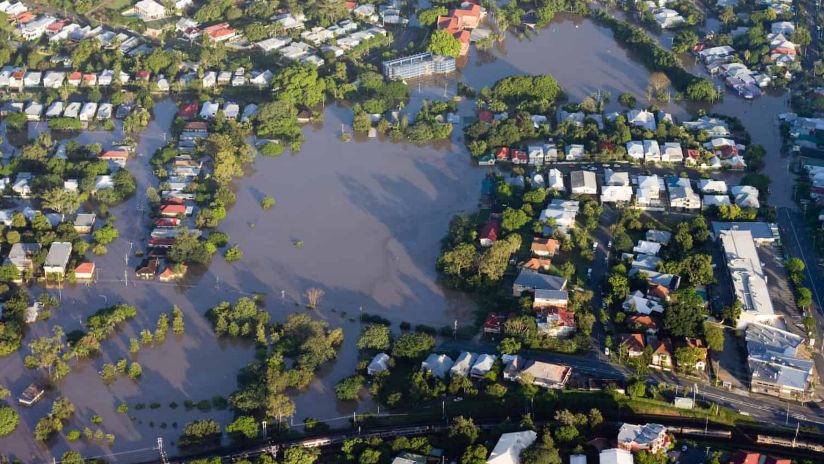Get up to speed on tech trends and navigating teen tech use

Our recent research reveals today, less than 1 in 5 (19%) Australian adults feel that they can completely keep up with or understand the latest online and social media trends popular with teens.
Not only are Aussies finding it hard to keep up, but 43% of parents of 8-15 year olds also don’t feel strongly confident having conversations with their children around setting boundaries for tech and social media use.
We recently held a webinar, hosted by Em Rusciano featuring a panel of experts discussing the top trends parents need to be across in 2021, how kids are engaging with these trends and emerging social media platforms and how to talk to teens about tech use and setting boundaries.
We invited social media Expert Grace Watkins, Aussie TikTok sensation Scott Boersen, Telstra cyber safety pro Darren Pauli, and ReachOut Parents’ Annie Wylie to discuss and explore the ever-developing world of social platforms and tech for teens.
We’ve pulled out the best questions below, and made the whole hour-long panel discussion available for you here so you can get the full story.
What is it about TikTok that has captured youth’s imaginations?
Scott Boersen:
I think it’s probably due to a shorter attention span! When Facebook first came out, you got so much of what you wanted to see. TikTok has made that more condensed and easier to consume. The videos are super short and you can swipe away from what you don’t like in seconds, and then the algorithm learns to show you content that you like for longer. The more you watch, the better your feed becomes tailored for you.
And because it’s all short form, you can bounce around your interests really quickly. From plants to cooking, to lettuce tea and anything else after that. It’s also just everyday people, and why Facebook and Instagram clicked early on.
Gaming is huge, but the new communities might be getting away from us. What is a Twitch and what is a Discord?
Grace Watkins:
Beyond the games that people are playing, there are platforms that kids are engaging with to either support their own gameplay or watch others play games. Twitch and Discord fit into that.
Beyond the games they might be playing like Fortnite, Minecraft or Roblox, they might be watching someone else or streaming themselves playing on a platform like Twitch. It’s one of the biggest game streaming platforms.
Discord is a community-based chat platform where people are talking about the games that they like and particular groups.
YouTube is the other major platform where people watch others play games. There’s a huge market of creators making 20-minute game videos who are amassing audiences of millions watching them do that.
These sorts of games are the way things are trending going forward. They look different to what you expect of a game, but they have a huge amount more depth. Like sandbox games where you can build, create and interact with the ecosystem of the game.
How can I be more involved with my kid who’s a gamer?
Grace Watkins:
It’s amazing during COVID how parents have connected with their kids over gaming. Whether they’re playing together, or just watching gaming content with their kids online.
A disconnect can come between kids and parents where there’s a lack of understanding about particular subject matter. Even parents making the effort or having a conversation about their kids playing and what they like about it, it’s a great first step to take.
Growing up, my brother was into games, and I have vivid memories of my parents not understanding and being points of contention!
How can a parent find what’s trending online so they can connect with their kids?
Get involved! The easiest way to figure out what’s trending is to download these apps and get on the feed for yourself. As you scroll you’ll notice these trends, and the easiest way to pick up on them is to notice the sounds people are using or the dances they’re doing.
To connect your kids is a little different in practice. The way I did it was to show my parents the videos that I like to watch. It starts to build an idea of what the app is about and the content that you like. Starting to share videos that you think your kids will like helps you gauge what they like in return and where they are on the platform.
How can you talk to kids about their tech use?
Annie Wylie:
Be open to learning from them. You can be a bit vulnerable. And you can say that you don’t actually get it, but recognise it’s a part of their life and it’s important that I as a parent do know about it, and I want and I want you to share that with me.
Your teen might want to say that this is their thing, but it’s showing them that you’re comfortable saying you don’t know something and showing that parents don’t know everything in reality. It’s just a good chance to connect with them and establish new boundaries.
Another thing is just to ask them how they feel about some of those things you’re concerned about. So if you have concerns about the sorts of accounts they follow, for instance, rather than saying, ‘I’m concerned about this’, you could actually start with, ‘Hey, could you tell me a little bit about some of the accounts that you follow’ and just be curious, see what they say. They might actually surpriseyou in coming to some of those realisations themselves without you having to go in on that attacking front foot.
Finally, in terms of actual boundaries (which looks really different for all families), one thing to really think about is role modelling. So if you have boundaries that you’re really clear on as a parent that you want your teen to follow, then think about whether you yourself, follow those boundaries. For example, if you as a parent are on your phone all the time during dinner, but you have your expectation that your teen won’t be on the phone during dinner, then we’re probably going to have a bit of friction about screen time, right?
How do you protect your kids, and monitor what they are doing on the internet or social media platforms?
Darren Pauli:
There are heaps of technical platforms that you can use…that you can kind of use to really keep tabs on kids.
That’s what I’d call more of a kind of a stick approach.
And it’s really up to you, as a parent, how you do these things, but you need to know that your kids almost always will find around a way around a technical control that you think is going to work.
You can’t use technical controls, in and of itself – and just leave it at that. As Annie said before, an open dialogue is important.
Darren Pauli’s guide to being safe on the internet
Parental controls
- Can give you some assurance over the content your kids view online, the people with whom they can interact, and the total time they spend on their devices.
- Some controls are built into smart phones including iPhone and Android.
- Big social media platforms like TikTok, Instagram, and Facebook have their own specialised controls, too.
Password managers
- Password managers set complex random passwords you have no hope of remembering and store them in what you can consider a vault. That vault can be unlocked with a key – a single password you need to remember.
- Apple and Android have password managers built into their phones. Apple’s iCloud keychain works across Apple products like iPhone and iPad, while Google’s works on Android phones and the Chrome web browser.
- Paid password managers like 1Password and LastPass are also popular choices.
Multi-factor authentication (also called two-factor or two-step authentication)
- Multi-factor authentication is the best security defence you can use.
- Multifactor authentication is most often a code you enter after your password, but only one time for each device you use, like your phone or laptop, so you are not typing it out endlessly.
- It is a way to prove beyond a password that you are the owner of your account.
- A hacker who has stolen your password will be unable to break into your account protected by multi-factor authentication because they don’t have access to your phone to get the code. They almost always give up and move on.


